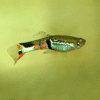To provide the best experiences, we use technologies like cookies to store and/or access device information. Consenting to these technologies will allow us to process data such as browsing behaviour or unique IDs on this site. Not consenting or withdrawing consent, may adversely affect certain features and functions.
The technical storage or access is strictly necessary for the legitimate purpose of enabling the use of a specific service explicitly requested by the subscriber or user, or for the sole purpose of carrying out the transmission of a communication over an electronic communications network.
The technical storage or access is necessary for the legitimate purpose of storing preferences that are not requested by the subscriber or user.
The technical storage or access that is used exclusively for statistical purposes.
The technical storage or access that is used exclusively for anonymous statistical purposes. Without a subpoena, voluntary compliance on the part of your Internet Service Provider, or additional records from a third party, information stored or retrieved for this purpose alone cannot usually be used to identify you.
The technical storage or access is required to create user profiles to send advertising, or to track the user on a website or across several websites for similar marketing purposes.














Emily Carter (verified owner) –
I recently purchased a pair of Poecilia Wingei «Top Yellow Sword» (True Endler, Livebearer) and I couldn’t be happier with my decision! After just two weeks in my well-planted 20-gallon tank, these little beauties have already brought so much life to my aquarium. The vibrant yellow and black coloration is stunning and adds a pop of color that I didn’t realize I needed. What’s really impressive is how active and social they are; they swim around happily, interacting with each other and exploring their environment.
Compared to the standard guppies I had previously, the Endler guppies are more dynamic and display a fascinating range of behaviors. I also appreciate that they’re livebearers, which means I might have some little fry in the future—what a bonus!
One minor concern I had was ensuring their diet was varied enough, but I’ve found that a mix of high-quality flakes and occasional frozen food keeps them thriving. I wholeheartedly recommend these Poecilia Wingei to anyone looking to add some personality to their tank, especially if you’re a beginner or an experienced aquarist alike. You’ll love watching them flourish!
Emily Carter (verified owner) –
I recently added a pair of Poecilia Wingei ‘Top Yellow Sword’ to my aquarium, and I couldn’t be happier! These beautiful Endler guppies have brought so much life and color to my tank. After just two weeks, I noticed their vibrant yellow swords sparkling under the aquarium lights, making them a stunning focal point.
As a caring fish parent, I appreciate how easy they are to care for; they acclimated brilliantly and get along well with my other tropical fish. I initially worried about compatibility, but they’ve shown no signs of aggression. The slight variations in their colors and patterns add an enchanting dynamic to my setup.
Compared to other livebearers I’ve kept, these Endler guppies are much hardier and more active, providing a great experience for anyone looking to enrich their aquarium. They thrive in a well-planted tank, so I recommend adding some lush greens for them to explore.
If you’re new to the hobby or a seasoned aquarist looking for easy-care, colorful fish, I highly recommend this pair. They’ve truly brightened up my aquarium, and I would definitely purchase again. Just a heads up—be sure to provide them with a good filtration system to keep them happy and healthy!